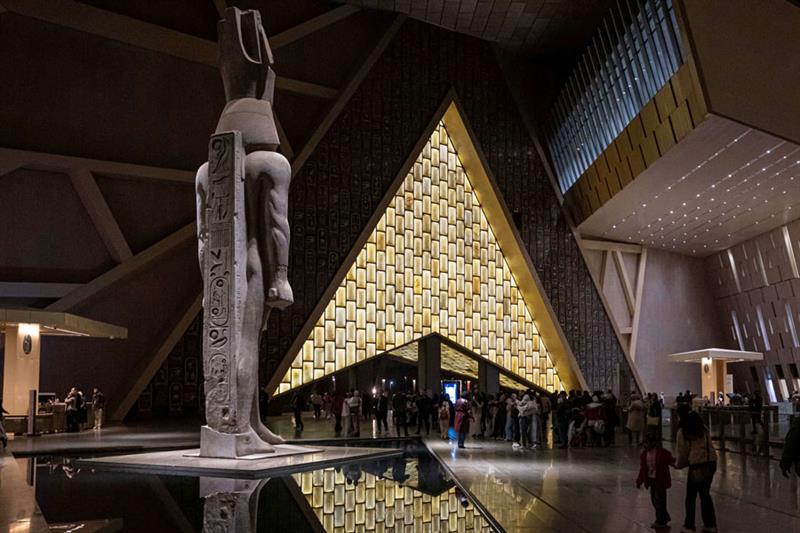
After years of anticipation and repeated delays, Egypt will finally open the Grand Egyptian Museum (GEM) on Saturday in a lavish ceremony that the government hopes will revive the tourism sector and inject fresh momentum into the country’s struggling economy.
A total of 79 international delegations, including 39 heads of state and government, are expected to attend the grand opening, scheduled for 7:30 p.m. local time (1730 GMT). Germany, Japan, Saudi Arabia, Belgium, Spain, and Denmark are among the countries sending high-level representatives, the Egyptian presidency announced.
In the days leading up to the event, dramatic beams of light have illuminated both the Giza Pyramids and the museum’s monumental façade — a dazzling prelude to Saturday night’s spectacle.
Positioned on a gentle incline overlooking the iconic Giza Plateau, the museum sits just beyond the shadow of the pyramids. Built with substantial financial and technical backing from Japan, the GEM spans nearly 500,000 square metres, making it one of the largest museums in the world.
The complex houses more than 100,000 artefacts, with about half on display — the largest collection ever dedicated to a single civilisation, according to Egyptian officials.
Inside, visitors will be welcomed into expansive, light-filled galleries with soaring ceilings and sand-coloured stone walls that blend seamlessly with the desert landscape.
At the heart of the atrium stands an imposing 83-tonne statue of Ramses II, one of Egypt’s most powerful and celebrated pharaohs.
Unlike the older, cramped Egyptian Museum in central Cairo, the GEM offers immersive galleries, precision lighting, virtual-reality experiences, and even a dedicated children’s museum.
One of its most innovative features is a live conservation lab, visible through towering glass walls, where visitors can watch experts painstakingly restore a 4,500-year-old solar boat buried near Pharaoh Khufu’s pyramid — believed to transport his soul across the heavens with the sun god Ra.
But the centrepiece of the museum is undeniably King Tutankhamun’s treasure trove of more than 5,000 artefacts, many of which are being displayed together for the very first time. Details surrounding the presentation of the boy king’s iconic gold funerary mask remain tightly guarded.
The Grand Egyptian Museum will officially open to the public on Tuesday, offering an unprecedented display of thousands of ancient artefacts — many of them funerary objects — previously scattered across various sites in Egypt.



